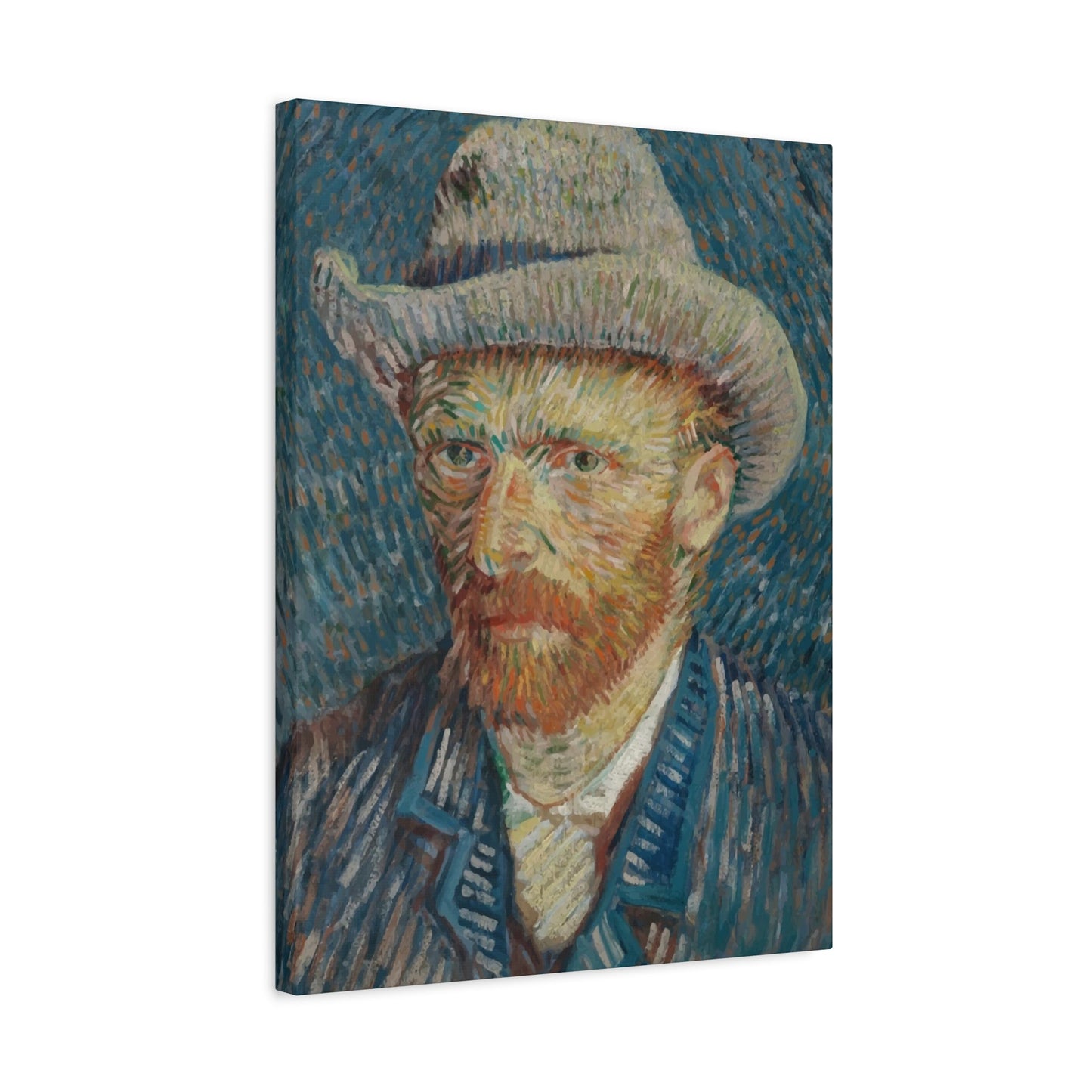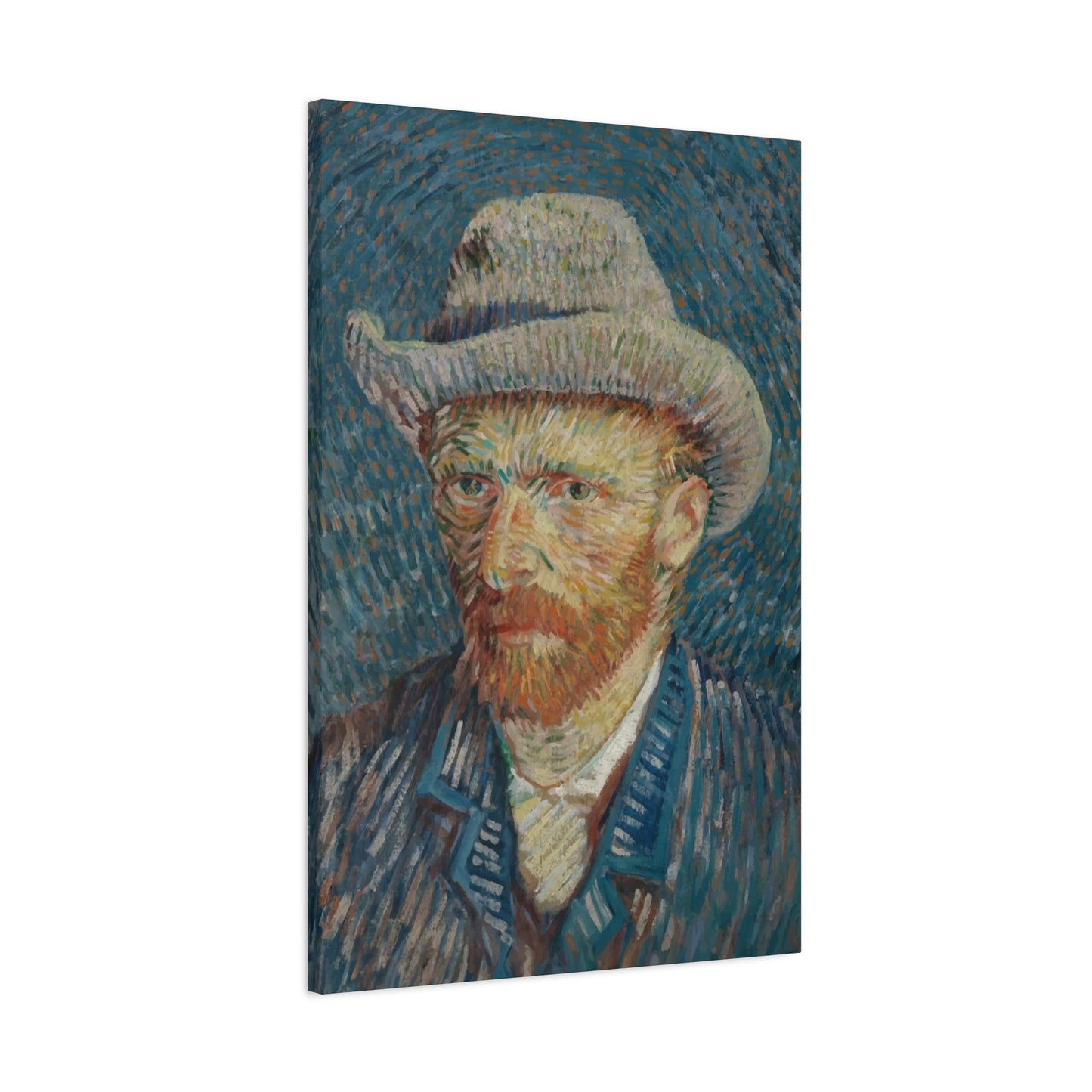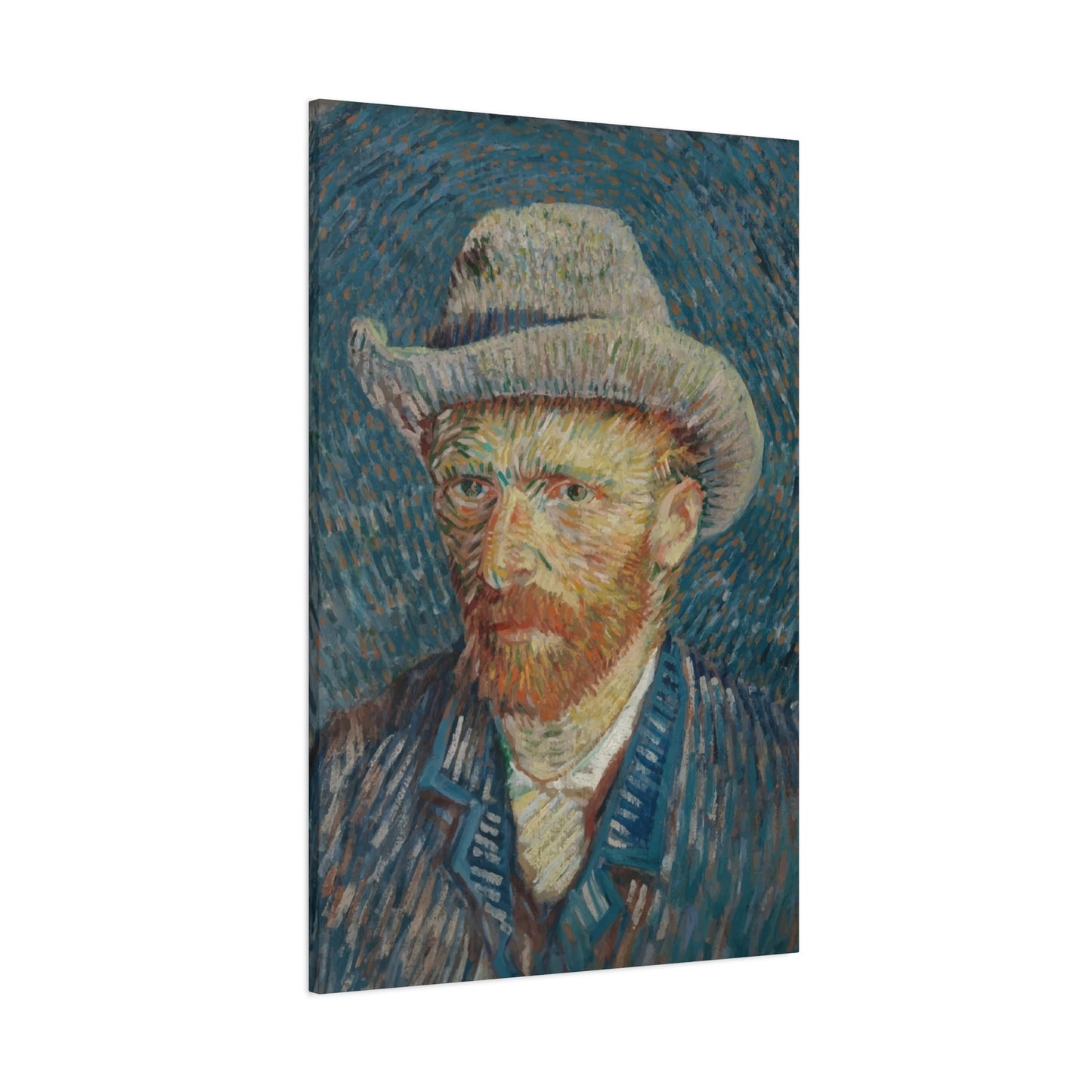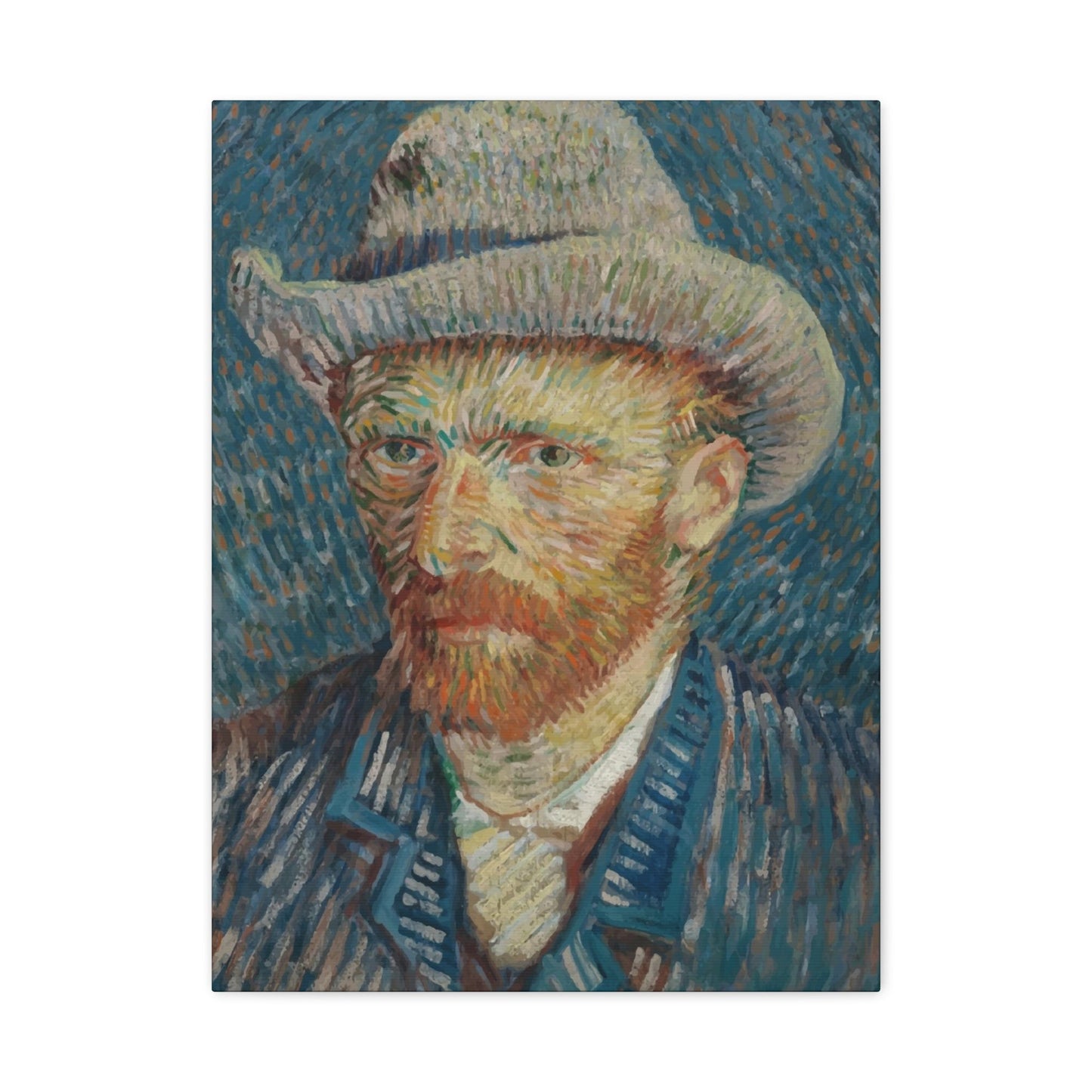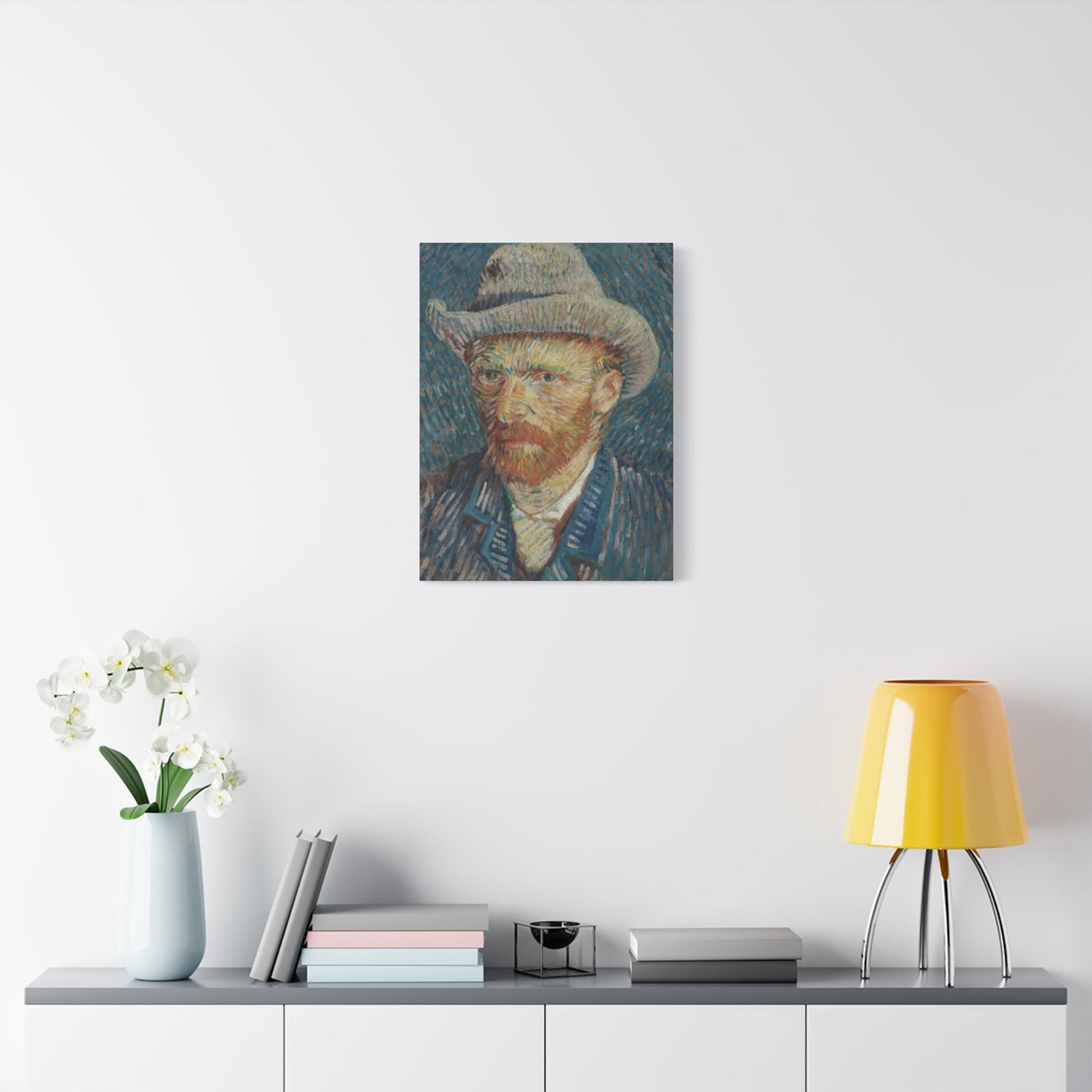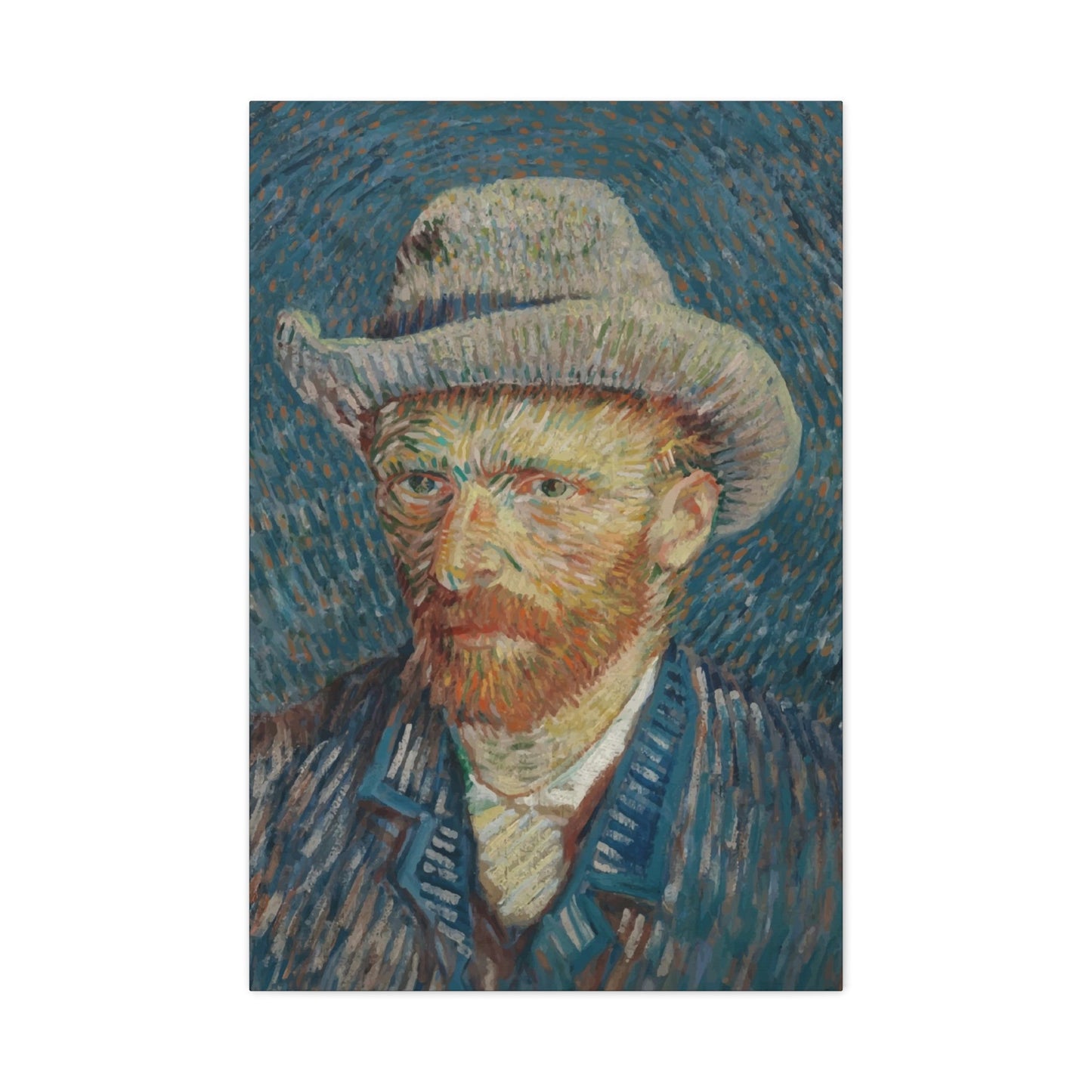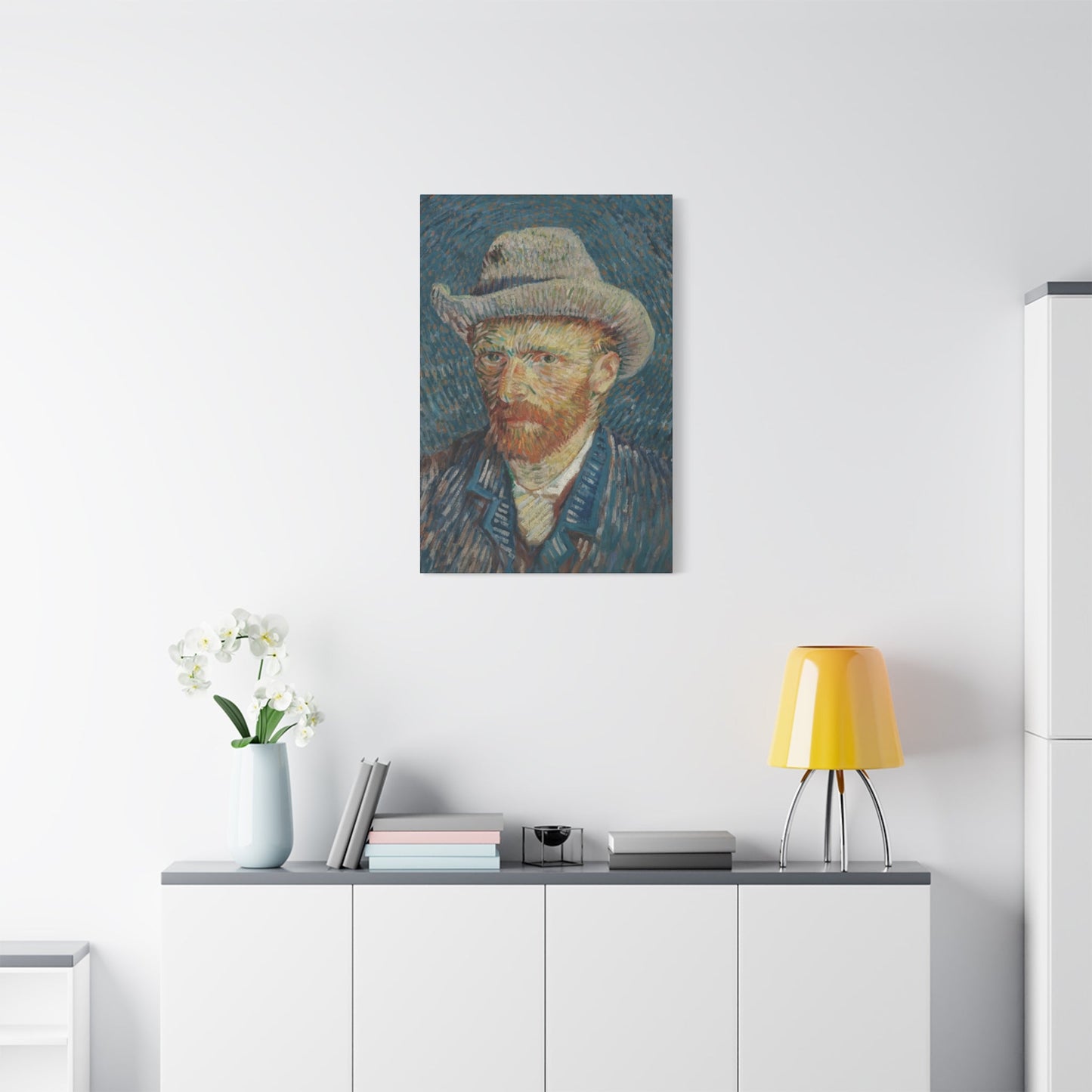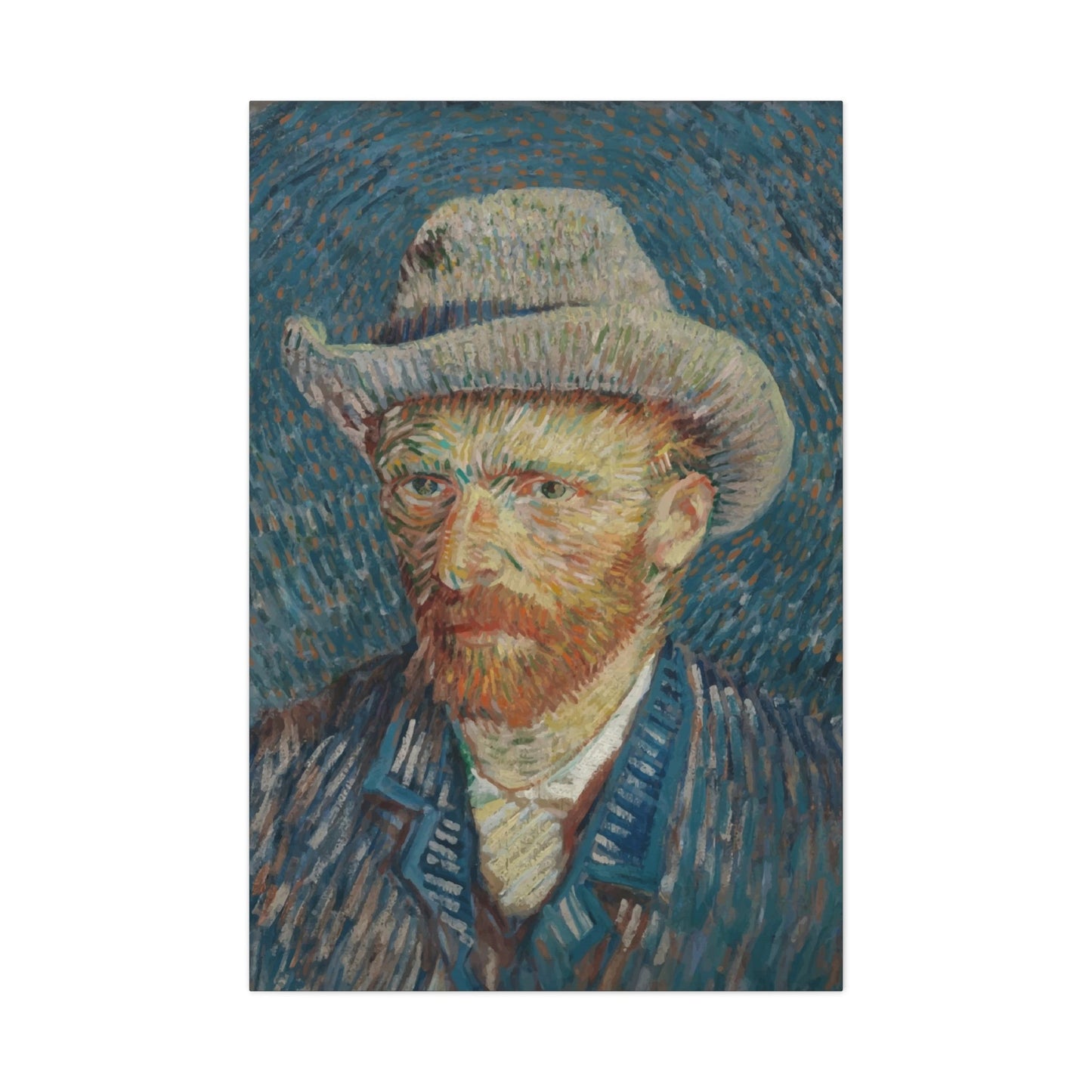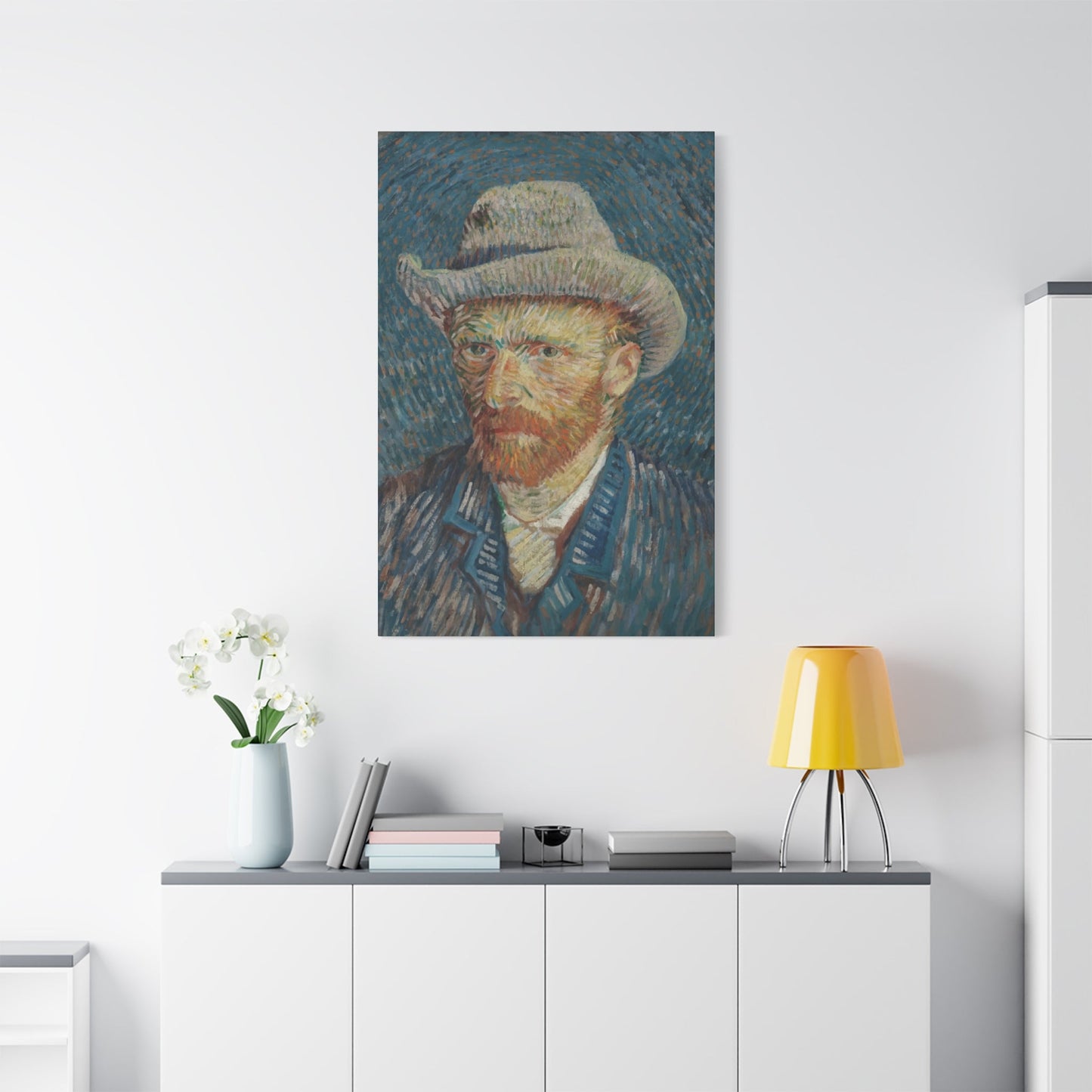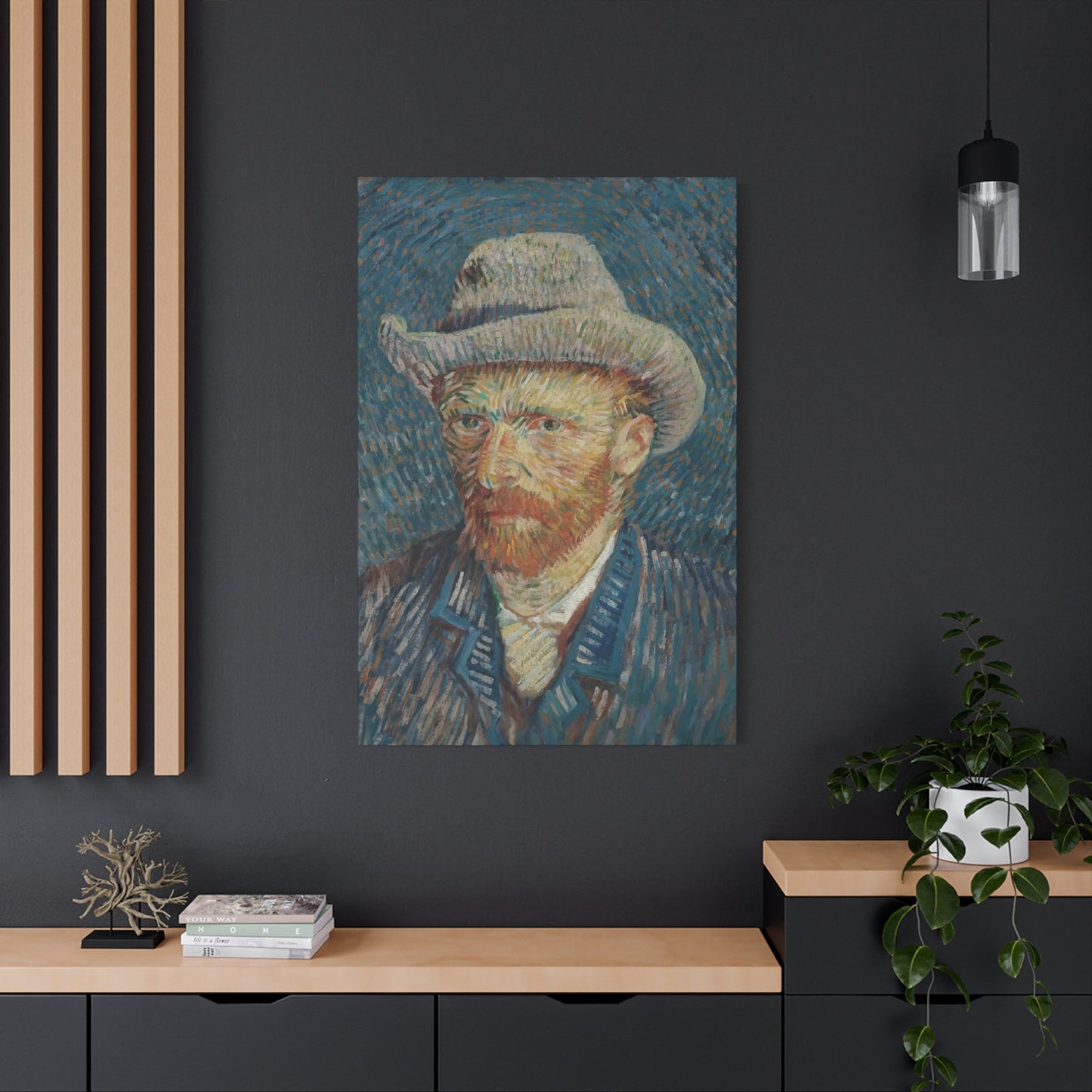Vincent's Wall Art: Mastering the Intersection of Classic Expression and Contemporary Design
When you walk into a room adorned with carefully selected pieces that capture the essence of artistic brilliance, you immediately feel a shift in atmosphere. Vincent's wall art represents more than mere decoration; it embodies a philosophy of living surrounded by beauty that speaks to the soul. Each piece carries within it layers of meaning, color theory, and emotional resonance that have been carefully cultivated through years of artistic exploration and refinement.
The beauty inherent in Vincent's wall art lies not just in its visual appeal but in the way it communicates across time and space. These pieces serve as bridges between different eras, connecting the artistic movements of the past with the aesthetic sensibilities of today. When examining these works, viewers discover intricate brushwork that reveals the artist's hand, color palettes that evoke specific moods and memories, and compositions that guide the eye through carefully planned visual journeys.
What makes Vincent's wall art particularly captivating is its ability to maintain relevance across generations. While trends in interior design come and go, these pieces possess an enduring quality that transcends temporal boundaries. The swirling patterns, bold color choices, and emotional intensity captured in each work continue to resonate with contemporary audiences, proving that true artistic excellence never becomes outdated.
The aesthetic value of Vincent's wall art extends beyond its immediate visual impact. Each piece tells a story, capturing moments of inspiration, struggle, triumph, and deep connection with the natural world. The way light plays across textured surfaces, the manner in which colors blend and contrast, and the overall composition work together to create experiences that engage viewers on multiple levels. This multidimensional quality ensures that each encounter with these works reveals something new, making them inexhaustible sources of contemplation and appreciation.
Furthermore, the beauty of Vincent's wall art lies in its accessibility. While created by an artist of exceptional talent and vision, these works speak a universal language that requires no specialized knowledge to appreciate. The emotional directness and visual power of the pieces allow them to connect with viewers from all backgrounds, making them democratic in their appeal while remaining sophisticated in their execution.
Vincent's Wall Art: A Blend of Tradition and Modernity
The remarkable characteristic that distinguishes Vincent's wall art from countless other decorative options is its seamless integration of traditional artistic principles with forward-thinking aesthetic approaches. This fusion creates pieces that honor the rich heritage of European painting while simultaneously speaking to contemporary sensibilities and design preferences. The result is artwork that feels both familiar and fresh, comforting yet innovative.
Traditional elements in Vincent's wall art manifest through the adherence to classical composition rules, the use of time-honored painting techniques, and the exploration of themes that have occupied artists for centuries. The way space is organized within each piece, the attention to perspective and proportion, and the careful consideration of tonal values all demonstrate a deep respect for artistic traditions that stretch back through generations of masters.
However, what truly sets these pieces apart is how they push beyond conventional boundaries. The bold application of color, the expressive brushwork that sometimes borders on abstraction, and the willingness to distort reality in service of emotional truth all point toward a modern sensibility. This approach anticipated many developments in twentieth-century art, making Vincent's wall art remarkably prescient and surprisingly contemporary in feeling.
The traditional aspect also appears in the subject matter choices. Landscapes, portraits, still life arrangements, and scenes of everyday life have been staples of artistic production for centuries. Vincent's wall art takes these familiar genres and infuses them with personal vision and emotional intensity that transforms them into something entirely new. A simple vase of flowers becomes a meditation on beauty and transience, while a landscape evolves into an exploration of humanity's relationship with nature.
The modern dimension of Vincent's wall art reveals itself in the psychological depth and expressive power of the works. Rather than simply documenting visual reality, these pieces attempt to capture inner experiences, emotional states, and subjective responses to the world. This emphasis on personal expression and emotional authenticity aligns perfectly with modern values and contemporary approaches to art-making.
The blend of tradition and modernity in Vincent's wall art makes these pieces particularly versatile in contemporary interiors. They can complement traditional design schemes while adding visual interest and emotional depth, or they can serve as focal points in modern minimalist spaces, providing warmth and humanity to otherwise austere environments. This versatility ensures that Vincent's wall art remains relevant across various design contexts and personal aesthetic preferences.
The Timeless Appeal of Vincent's Wall Art
Decades pass, design trends shift, and cultural preferences evolve, yet Vincent's wall art continues to captivate audiences with undiminished power. This timeless quality stems from several interconnected factors that work together to create art that transcends its historical moment while remaining deeply rooted in specific experiences and observations. The universal themes explored in these works ensure their continued relevance regardless of changing fashions or contemporary concerns.
The emotional authenticity that characterizes Vincent's wall art forms the foundation of its timeless appeal. Rather than creating decorative pieces designed to match furniture or complement color schemes, these works emerge from genuine emotional experiences and sincere attempts to capture the essence of subjects. This authenticity resonates with viewers across time because human emotions remain constant even as external circumstances change. The joy, sorrow, wonder, and longing expressed in these pieces speak to fundamental aspects of human experience that remain unchanged.
Another factor contributing to the timeless quality of Vincent's wall art is the technical mastery evident in each piece. While the style may appear spontaneous and expressive, it rests on a solid foundation of skill and knowledge. The understanding of color theory, the control of paint application, and the ability to create compelling compositions all demonstrate expertise that commands respect regardless of stylistic preferences. This technical excellence ensures that the works maintain their visual power and continue to reward close examination.
The subjects depicted in Vincent's wall art also contribute to their enduring appeal. Natural landscapes, human figures, domestic scenes, and botanical subjects possess inherent interest that doesn't diminish with time. Unlike artworks that reference specific contemporary events or rely on knowledge of particular cultural moments, Vincent's wall art focuses on universal subjects that remain recognizable and relevant across generations and cultures.
The color relationships established within Vincent's wall art represent another source of timeless appeal. The vibrant blues, golden yellows, deep greens, and rich earth tones create harmonies that remain visually satisfying regardless of current color trends. These palette choices draw from nature and human psychology rather than fashion, ensuring their continued effectiveness in creating emotional responses and visual interest.
The scale and format of Vincent's wall art also contribute to its timeless quality. These pieces were created with a human scale in mind, making them suitable for residential spaces of various sizes. Unlike monumental artworks designed for institutional settings or tiny works that require specific viewing conditions, Vincent's wall art fits comfortably into the spaces where people actually live and spend time.
The philosophical approach underlying Vincent's wall art adds another dimension to its timeless appeal. These works express a worldview that values direct observation, emotional honesty, and deep engagement with both nature and human experience. This perspective remains compelling and relevant, offering viewers a model for meaningful interaction with the world that transcends specific historical circumstances.
Incorporating Vincent's Wall Art into Contemporary Interiors
The process of integrating Vincent's wall art into modern living spaces requires thoughtful consideration of multiple factors including color coordination, spatial relationships, lighting conditions, and overall design philosophy. When executed successfully, this integration creates environments that feel both aesthetically cohesive and emotionally rich, combining the best of historical artistic achievement with contemporary design sensibilities.
Color coordination represents one of the primary considerations when incorporating Vincent's wall art into contemporary interiors. The vibrant palettes characteristic of these pieces offer numerous possibilities for creating harmonious relationships with surrounding elements. One approach involves selecting artwork that complements existing color schemes, using the pieces to reinforce and enhance the palette already present in furniture, textiles, and architectural elements. Alternatively, designers might choose pieces that provide dramatic contrast, using the artwork to introduce unexpected color accents that energize otherwise neutral spaces.
The bold blues often found in Vincent's wall art work particularly well in contemporary interiors that favor cool, calming color schemes. These pieces can anchor spaces designed around whites, grays, and other cool neutrals, providing visual interest without overwhelming the overall aesthetic. Similarly, works featuring golden yellows and warm earth tones can add richness and warmth to modern spaces that might otherwise feel sterile or cold.
Spatial considerations play an equally important role in successfully incorporating Vincent's wall art into contemporary interiors. The scale of the artwork must be appropriate for the wall space available and the viewing distances involved. Large statement pieces work well on prominent walls where they can serve as focal points, while smaller works might be grouped together to create gallery-style arrangements that add visual interest to larger expanses.
Lighting considerations significantly impact how Vincent's wall art appears in contemporary interiors. Natural light brings out the luminous quality of the colors and reveals the textural qualities of the paint surface, while artificial lighting requires careful planning to avoid glare and ensure even illumination. Many designers recommend using adjustable lighting systems that allow for different moods and highlighting options depending on time of day and desired atmosphere.
The relationship between Vincent's wall art and furniture placement deserves careful attention. Pieces should be positioned where they can be viewed comfortably from seating areas without competing with furniture for attention. Creating clear visual hierarchies helps ensure that the artwork enhances rather than clutters the space. In contemporary minimalist interiors, Vincent's wall art can serve as the primary decorative element, reducing the need for additional accessories.
Frame selection significantly impacts how Vincent's wall art integrates into contemporary interiors. While traditional ornate frames might suit some settings, many contemporary spaces benefit from simpler frame designs that don't compete with the artwork itself. Clean-lined frames in natural wood tones, matte black finishes, or even white can provide appropriate boundaries for the artwork while maintaining the overall contemporary aesthetic of the space.
The emotional tone of selected pieces should align with the intended use and atmosphere of each space. Energetic, vibrant works featuring bold colors and dynamic compositions might suit social areas like living rooms and dining spaces, while quieter, more contemplative pieces could be more appropriate for bedrooms and private retreats. This matching of emotional content to functional requirements helps create cohesive environments that support their intended uses.
The Influence of Vincent's Wall Art on Modern Decor
The ripples created by Vincent's wall art continue to expand through contemporary interior design, influencing everything from color choices to decorative philosophies. This ongoing influence manifests in numerous ways, both obvious and subtle, shaping how people think about creating meaningful, beautiful living environments. The principles embodied in these artistic works have permeated design thinking, becoming foundational elements of modern decorative approaches.
The acceptance of bold color in residential interiors owes much to the pioneering color work evident in Vincent's wall art. Before these pieces demonstrated the emotional power and aesthetic potential of vibrant, unmodulated color, many interior spaces remained confined to subdued, conservative palettes. The success of Vincent's wall art in creating compelling visual experiences through brave color choices encouraged designers and homeowners to experiment more freely with saturated hues and unexpected color combinations.
Contemporary accent wall trends reflect the influence of Vincent's wall art, with homeowners increasingly willing to dedicate entire walls to single bold colors that create dramatic focal points. This approach mirrors the color blocking and large areas of unified tone found in many pieces, translated from canvas to architectural scale. The psychological impact of these color choices, creating mood and atmosphere within living spaces, directly parallels the emotional expressiveness that characterizes Vincent's wall art.
The texture-rich aesthetic popular in contemporary decor also shows the influence of Vincent's wall art. The thick, visible brushstrokes and built-up paint surfaces characteristic of these pieces have inspired appreciation for tactile qualities in interior design. This manifests in the popularity of textured wallcoverings, plastered walls, and decorative finishes that create visual interest through surface variation rather than relying solely on pattern or color.
Modern appreciation for imperfection and handmade quality in home decor connects directly to the aesthetic of Vincent's wall art. Rather than seeking machine-made perfection, contemporary design increasingly values objects that reveal the hand of their maker and bear marks of the creative process. This shift toward authenticity and away from sterile perfection aligns with the expressive, gestural quality evident in Vincent's wall art.
The emphasis on personal expression in contemporary interiors rather than adherence to prescribed design rules reflects another aspect of Vincent's wall art influence. Just as these artistic pieces prioritize emotional truth over conventional beauty, modern decorating increasingly encourages individuals to create spaces that reflect personal taste and values rather than simply following trends. This democratization of design parallels the accessibility and emotional directness of Vincent's wall art.
The biophilic design movement, which emphasizes connections to nature within built environments, finds precedent in Vincent's wall art. The frequent depiction of natural subjects, the obvious love of the outdoors evident in landscape pieces, and the organic forms and color palettes all anticipate contemporary interest in bringing natural elements into living spaces. This influence appears in everything from botanical prints to natural material choices to color schemes derived from natural landscapes.
Contemporary open-plan living spaces benefit from the lessons of Vincent's wall art regarding focal points and visual anchors. In large, undivided spaces, carefully placed artwork serves crucial functions in defining areas and creating visual interest. The compositional strength and visual power of Vincent's wall art make such pieces particularly effective in these applications, demonstrating principles that inform contemporary approaches to decorating challenging open spaces.
Vincent's Wall Art: A Tribute to Artistic Legacy
Every brushstroke preserved in Vincent's wall art carries forward an artistic legacy that extends far beyond individual pieces or single careers. These works represent culminations of centuries of artistic development while simultaneously pointing toward future possibilities. They honor traditions passed down through generations of artists while asserting individual vision and personal expression. This dual quality makes Vincent's wall art particularly significant from both historical and contemporary perspectives.
The technical traditions evident in Vincent's wall art connect to a lineage stretching back through Dutch masters, French innovators, and broader European painting traditions. The understanding of light and shadow, the organization of pictorial space, and the manipulation of paint materials all demonstrate knowledge passed down through artistic generations. Even as these pieces push against conventional boundaries, they do so from a position of deep understanding of established techniques and approaches.
The subject matter choices in Vincent's wall art pay homage to artistic traditions while transforming them through personal vision. Landscapes, still life arrangements, and portrait studies have occupied artists for centuries, creating rich traditions of representation and interpretation. By engaging with these traditional subjects, Vincent's wall art positions itself within ongoing artistic conversations while contributing unique perspectives and innovative approaches.
The color theories explored in Vincent's wall art draw from scientific and artistic developments of earlier periods while pushing toward new possibilities. The understanding of complementary colors, the psychological effects of different hues, and the optical mixing of pigments all rest on knowledge accumulated by previous generations of artists and scientists. However, the application of this knowledge in service of emotional expression rather than simply naturalistic representation marks a significant evolution in how color could be used in painting.
The compositional strategies employed in Vincent's wall art honor classical principles of balance, rhythm, and visual hierarchy while introducing more dynamic and expressive approaches. The way lines guide viewer attention, the creation of depth through overlapping forms and atmospheric perspective, and the strategic placement of focal points all demonstrate mastery of traditional compositional techniques. Yet these elements are deployed in ways that create more emotionally charged and psychologically complex experiences than purely academic applications might achieve.
The philosophical approach to art-making embodied in Vincent's wall art carries forward Romantic ideals of the artist as someone who sees more deeply and feels more intensely than ordinary observers. This conception of the artist's role, which emerged in the late eighteenth and early nineteenth centuries, finds full expression in pieces that prioritize emotional truth and personal vision over objective documentation. By embracing and extending this tradition, Vincent's wall art contributed to evolving understanding of what art could be and what purposes it might serve.
The legacy honored through Vincent's wall art includes not just painting traditions but broader cultural values around beauty, nature, and human experience. These pieces assert the importance of preserving and celebrating moments of visual splendor, of paying attention to the world around us, and of finding meaning in both grand vistas and humble subjects. This philosophical stance connects to long traditions of natural philosophy and aesthetic appreciation while remaining urgently relevant to contemporary life.
Transforming Spaces with Vincent's Wall Art
The capacity of Vincent's wall art to fundamentally alter the character and atmosphere of interior spaces represents one of its most valuable qualities for contemporary homeowners and designers. Unlike decorative elements that simply fill empty walls, these pieces actively shape how spaces feel and function, influencing mood, perception, and even behavior. This transformative power stems from the combination of visual strength, emotional resonance, and aesthetic sophistication that characterizes the work.
The most immediate transformation occurs through color introduction. Spaces that might feel bland, cold, or emotionally flat can be energized and warmed through the strategic placement of Vincent's wall art featuring vibrant palettes. A room dominated by neutral tones gains new life when artwork introduces rich blues, golden yellows, or warm earth tones. These color injections don't just add visual interest; they fundamentally shift the psychological atmosphere of the space, making it feel more welcoming, energetic, or contemplative depending on the specific colors and compositions involved.
The textural quality of Vincent's wall art transforms spaces by adding visual richness and tactile interest. In contemporary interiors that might rely heavily on smooth, machine-made surfaces, the visible brushwork and built-up paint of these pieces introduces welcome variation. Even from a distance, the surface quality of the artwork creates visual complexity that engages attention and rewards closer examination, transforming flat walls into dynamic surfaces worthy of sustained viewing.
The scale relationships established by Vincent's wall art can transform perceptions of space itself. Appropriately sized pieces can make small rooms feel more substantial by providing visual weight and presence, while in larger spaces, artwork can create intimacy and define functional areas. The physical dimensions of the pieces interact with architectural elements to influence how viewers perceive room proportions and spatial relationships.
Lighting conditions undergo transformation when Vincent's wall art enters a space. The luminous quality of many pieces seems to generate its own light, brightening rooms and creating focal points that draw the eye. This quality is particularly valuable in spaces with limited natural light, where the artwork can provide visual warmth and prevent the area from feeling dim or oppressive. The interplay between artwork and both natural and artificial light sources creates dynamic conditions where the space feels different at various times of day.
The emotional atmosphere of spaces transforms through the presence of Vincent's wall art. Pieces characterized by calm, harmonious compositions create serene environments suitable for relaxation and contemplation. More energetic works featuring dynamic brushwork and contrasting colors generate excitement and stimulation, making spaces feel more alive and engaging. This emotional quality influences how people experience and use spaces, subtly shaping behavior and mood.
Cultural sophistication becomes immediately apparent in spaces featuring Vincent's wall art. These pieces signal aesthetic awareness and appreciation for artistic excellence, elevating the perceived cultural status of environments. This transformation operates on both conscious and unconscious levels, influencing how both residents and visitors understand and relate to the space. The presence of significant artwork transforms ordinary rooms into culturally rich environments that reflect intellectual and aesthetic values.
The narrative quality of Vincent's wall art transforms spaces by introducing stories and meanings that extend beyond purely visual considerations. Each piece carries associations with artistic history, biographical narratives, and cultural significance that add layers of meaning to spaces. Rooms become not just functional areas but settings for engagement with broader cultural narratives and artistic traditions.
The Emotional Impact of Vincent's Wall Art
Few forms of visual art achieve the level of emotional directness and psychological power characteristic of Vincent's wall art. These pieces bypass intellectual analysis to strike directly at feelings and responses, creating immediate emotional connections with viewers. This capacity for emotional impact represents one of the most significant aspects of the work, distinguishing it from more decorative or purely aesthetic approaches to wall art and explaining much of its enduring appeal.
The emotional intensity conveyed through Vincent's wall art emerges first from color choices and combinations. The psychological effects of color have been extensively studied, and the palettes employed in these pieces demonstrate intuitive understanding of how different hues affect mood and emotion. Deep blues evoke contemplation, mystery, and sometimes melancholy, while golden yellows radiate warmth, optimism, and energy. The reds, oranges, and earth tones found throughout many pieces create feelings of vitality, comfort, and connection to the natural world.
Beyond individual color effects, the relationships between colors in Vincent's wall art generate additional emotional complexity. Complementary color pairings create visual tension and excitement, while analogous schemes produce harmony and coherence. The bold juxtapositions of colors that might seem clashing in isolation work together to generate emotional intensity and psychological depth, creating experiences that engage viewers on visceral levels.
The expressive brushwork characteristic of Vincent's wall art conveys emotion through purely formal means. Energetic, swirling strokes communicate agitation, passion, or dynamic energy, while calmer, more controlled applications suggest tranquility or melancholy. The physical gesture of paint application becomes visible in the finished work, allowing viewers to sense the emotional state of the artist during creation. This quality creates unusual intimacy, as if the emotional content of creative moments has been preserved and remains accessible to viewers.
The subjects depicted in Vincent's wall art carry inherent emotional associations that resonate with universal human experiences. Landscapes evoke relationships with nature and feelings of space, freedom, or isolation. Portraits convey human connection, loneliness, or psychological complexity. Still life arrangements might suggest domesticity, transience, or simple appreciation for beauty in everyday objects. These subject choices engage emotions through recognizable content while the treatment of subjects adds layers of personal interpretation and feeling.
The compositions employed in Vincent's wall art guide emotional responses through formal structure. Balanced, symmetrical arrangements create feelings of stability and harmony, while asymmetrical compositions might generate tension or dynamic energy. The way lines flow through pieces, the creation of depth and recession, and the distribution of visual weight all influence emotional experiences in subtle but significant ways.
The atmospheric qualities achieved in Vincent's wall art contribute substantially to emotional impact. The creation of particular light conditions, weather effects, or times of day evokes associated memories and feelings. A golden afternoon light might recall peaceful moments of contentment, while stormy skies suggest drama or inner turmoil. These atmospheric effects work on subconscious levels, triggering emotional responses based on accumulated life experiences and associations.
The authenticity evident in Vincent's wall art amplifies its emotional impact. Viewers sense that these pieces emerge from genuine feeling rather than calculated effects or commercial considerations. This authenticity creates trust and openness, allowing viewers to respond emotionally without the defenses they might raise against overtly manipulative content. The sincerity of emotional expression invites equally sincere emotional response, creating genuine connections between artwork and audience.
The vulnerability expressed through Vincent's wall art contributes to its emotional power. Rather than presenting controlled, polished surfaces that maintain emotional distance, these pieces reveal struggles, uncertainties, and intense feelings. This vulnerability makes the work relatable despite the exceptional talent evident in execution, allowing viewers to see their own emotional experiences reflected and validated.
Vincent's Wall Art: A Conversation Starter
Beyond their aesthetic and emotional qualities, pieces of Vincent's wall art serve important social functions in contemporary homes, perhaps most notably as catalysts for conversation and connection between people. The distinctive visual character, cultural significance, and rich associations of these works provide natural topics for discussion, helping to break social ice and deepen relationships. This conversational dimension adds practical value to the purely artistic merits of the pieces.
The immediate visual impact of Vincent's wall art naturally draws attention and comment from visitors. The bold colors, distinctive style, and emotional intensity of the pieces virtually demand response, making them impossible to ignore in any space they occupy. This attention-grabbing quality provides easy conversational opening for hosts and guests alike, offering a shared point of focus that can help overcome initial social awkwardness or uncomfortable silences.
The cultural recognition associated with Vincent's wall art provides conversational accessibility. Many people possess at least passing familiarity with the artistic style and biographical narrative, even if they lack detailed art historical knowledge. This widespread recognition means that conversations about the pieces don't require specialized vocabulary or extensive background knowledge, making the artwork approachable for guests from diverse educational and cultural backgrounds.
The emotional content of Vincent's wall art invites personal response and sharing of subjective reactions. Unlike purely decorative items that might elicit only brief comments, these pieces encourage deeper engagement and more meaningful exchange. Guests might share how particular colors or compositions make them feel, relate the artwork to their own experiences, or discuss what attracts them to certain pieces. These personal revelations facilitate genuine connection between people.
The stories associated with Vincent's wall art provide rich conversational material beyond the visual qualities of the pieces themselves. The dramatic biographical narrative of the artist, the circumstances surrounding creation of specific works, and the subsequent journey of pieces through history all offer compelling topics for discussion. These narratives add human interest dimensions that resonate with people who might not typically engage deeply with visual art.
The interpretive possibilities inherent in Vincent's wall art generate productive conversation through their open-ended quality. Rather than conveying single, definitive meanings, these pieces allow for multiple valid interpretations and responses. This ambiguity encourages discussion as people share different perspectives and reactions, enriching everyone's understanding and appreciation. The absence of simple right or wrong answers makes these conversations more relaxed and exploratory than competitive or judgmental.
The technical aspects of Vincent's wall art provide conversational material for those interested in artistic process and technique. Discussions might explore paint application methods, color theory, compositional strategies, or influences from other artists and movements. These more specialized conversations can deepen appreciation while demonstrating the complexity and sophistication underlying pieces that might appear spontaneous or simple.
The design implications of Vincent's wall art in specific spaces offer practical conversational angles. Guests might discuss how particular pieces work within overall interior schemes, what prompted specific placement decisions, or how artwork influences the feel of different rooms. These conversations bridge artistic appreciation with practical concerns about creating beautiful, functional living environments.
The personal connection aspect creates particularly meaningful conversational opportunities. When homeowners share why they chose specific pieces, what the artwork means to them personally, or how it relates to their values and interests, they reveal aspects of themselves that might not emerge through other conversational topics. These revelations deepen relationships and create genuine interpersonal connection.
Collecting Vincent's Wall Art: What You Need to Know
The process of building a collection of Vincent's wall art requires knowledge spanning artistic, practical, and financial considerations. Whether acquiring reproductions for personal enjoyment or investing in original pieces and authenticated prints, collectors benefit from understanding the landscape of available options, quality indicators, market dynamics, and preservation requirements. This knowledge empowers informed decisions that align with both aesthetic preferences and practical circumstances.
The distinction between different types of Vincent's wall art available to collectors represents the fundamental starting point for collecting decisions. High-quality reproductions created using advanced printing technologies can provide excellent visual experiences at accessible price points, making the work available to broad audiences. These reproductions range from standard posters to museum-quality giclée prints on canvas or fine paper, with corresponding variations in cost and longevity.
Quality assessment for reproductions requires attention to multiple factors. Color accuracy represents a primary concern, as reproductions should faithfully render the hues and tonal relationships of original works. The printing technology, substrate material, and ink quality all influence color fidelity and longevity. Museum-quality reproductions typically use archival inks and papers or canvases designed to resist fading and deterioration, ensuring the piece maintains its appearance for decades.
The framing and presentation of Vincent's wall art significantly impacts both appearance and preservation. Quality framing uses acid-free materials that won't damage artwork over time and may include protective glazing to guard against environmental factors. For canvas reproductions, the stretching and mounting quality affects how the piece hangs and whether it maintains proper tension. Professional framing represents a worthwhile investment that protects artwork while enhancing its presentation.
Provenance and authentication matter enormously for serious collectors pursuing vintage prints or other more valuable pieces. Documentation tracing the history of a piece, including its creation, ownership transfers, and exhibition history, establishes legitimacy and can substantially affect value. For higher-end acquisitions, working with reputable dealers and galleries that guarantee authenticity provides essential protection against fraud.
Market knowledge helps collectors make informed financial decisions. Understanding price ranges for different types of Vincent's wall art, factors that influence values, and market trends enables recognition of fair prices and potentially valuable opportunities. While not every collection decision should rest on investment potential, awareness of financial considerations helps in allocating collecting budgets effectively.
Condition assessment requires careful examination of potential acquisitions. For reproductions, checking for even color, sharp focus, and absence of printing defects ensures quality. For older pieces, examining for fading, staining, tears, or other damage helps gauge both condition and potential restoration needs. Understanding how condition affects value and enjoyment helps in evaluating whether particular pieces merit consideration despite imperfections.
The care and preservation of Vincent's wall art represents ongoing responsibilities for collectors. Protecting pieces from direct sunlight prevents fading, while maintaining stable temperature and humidity conditions prevents warping and other damage. Regular gentle cleaning removes dust without harming surfaces, and professional conservation services can address any problems that develop. Proper care ensures collections remain beautiful and valuable for future generations.
Display considerations influence collecting decisions, as artwork must ultimately fit within available spaces. Understanding the dimensions, format, and visual characteristics of pieces helps in selecting works that will function well in intended locations. Some collectors develop focused collections around specific subjects, periods, or color palettes that work coherently in their spaces, while others pursue more eclectic approaches.
The emotional and aesthetic satisfaction of collecting Vincent's wall art ultimately matters more than financial considerations for most collectors. Building a collection should reflect personal taste, emotional resonance, and genuine appreciation rather than purely investment thinking. The pieces that provide the most satisfaction are typically those that continue to reward viewing and create positive emotional responses, regardless of their market value.
The Evolution of Vincent's Wall Art Style
The artistic journey traced through Vincent's wall art reveals fascinating evolution in technique, subject matter, color use, and expressive approach. This developmental arc demonstrates how artistic vision clarified and intensified over time, influenced by changing circumstances, new influences, and deepening commitment to personal expression. Understanding this evolution enriches appreciation for individual pieces while providing insight into creative development more broadly.
The early phases of Vincent's wall art show marked influence from traditional academic approaches and Dutch painting traditions. These pieces often feature darker palettes, careful attention to tonal values, and relatively conventional subject matter and treatment. The emphasis falls on careful observation and technical proficiency, with less of the expressive intensity that would later become characteristic. These works demonstrate solid foundations while hinting at emerging personal vision.
The transition toward lighter palettes and more vibrant color marks a crucial evolutionary moment in Vincent's wall art. Exposure to different artistic influences and changing environmental circumstances contributed to this shift. The discovery of color theory principles and increasing confidence in personal vision enabled bolder chromatic choices that departed from naturalistic representation in service of emotional expression. This transition represents liberation from purely descriptive approaches toward more interpretive and expressive possibilities.
The development of distinctive brushwork techniques represents another significant evolutionary dimension. Early works show relatively smooth paint application and careful blending, while later pieces feature increasingly visible, directional brushstrokes that create rhythmic patterns and textural richness. This evolution reflects growing confidence and willingness to let the paint itself contribute to expressive content rather than simply serving as a medium for creating illusions of form and space.
Subject matter evolution in Vincent's wall art shows gradual expansion and refinement of interests. While certain themes remain constant throughout, the treatment of subjects becomes increasingly personal and emotionally charged. Landscapes evolve from relatively straightforward depictions to more interpretive visions that capture emotional responses to places. Still life arrangements move beyond technical exercises to become meditations on beauty, transience, and meaning in everyday objects.
Compositional approaches develop toward greater boldness and experimentation. Early works tend toward conventional arrangements and relatively conservative spatial organization, while later pieces embrace asymmetry, unusual viewpoints, and more dynamic organizational principles. This evolution demonstrates increasing willingness to prioritize expressive impact over conventional beauty or technical correctness.
The integration of symbolic and expressive content increases throughout the evolution of Vincent's wall art. While early works focus primarily on visual description, later pieces incorporate symbolic meanings and expressive distortions that prioritize emotional and psychological content over purely visual accuracy. This development reflects maturing artistic philosophy that valued internal truth over external appearance.
Technical innovations emerge through the evolution of Vincent's wall art, including experimental approaches to paint application, exploration of different surfaces and formats, and development of personal techniques for achieving specific effects. These innovations demonstrate restless creativity and unwillingness to settle into comfortable routines, constantly pushing toward new possibilities and more effective means of expression.
The increasing intensity of emotional content marks perhaps the most significant evolutionary aspect of Vincent's wall art. While maintaining technical sophistication, later works achieve levels of emotional directness and psychological power that distinguish them from both earlier personal work and the production of contemporaries. This intensification reflects deepening commitment to art as means of exploring and communicating internal experiences rather than simply documenting external appearances.
Vincent's Wall Art: A Window into the Past
Every piece of Vincent's wall art functions as a temporal portal, offering contemporary viewers access to vanished moments, historical conditions, and past ways of seeing and experiencing the world. These works preserve not just visual information but entire worldviews, emotional atmospheres, and cultural contexts that would otherwise remain inaccessible. This documentary dimension adds layers of historical and anthropological interest to the purely aesthetic qualities of the pieces.
The landscapes captured in Vincent's wall art provide invaluable records of how specific places appeared at particular historical moments. Fields, villages, and natural features preserved in these pieces offer glimpses of environments that have since been transformed by development, agricultural changes, and passage of time. While not created as documentary records, these works nonetheless preserve visual information about historical landscapes that few other sources provide with comparable vividness.
The depictions of everyday life in Vincent's wall art offer windows into historical living conditions, work practices, and social relationships. Images of agricultural labor, domestic scenes, and ordinary people going about daily activities provide rich material for understanding how life was lived in specific times and places. The attention to authentic detail in clothing, tools, and settings makes these pieces valuable historical documents despite their artistic purposes.
The architectural elements visible in Vincent's wall art preserve records of building styles, urban configurations, and structural details that might otherwise be lost. Churches, houses, streets, and infrastructure captured in these pieces document historical built environments, sometimes preserving images of structures that no longer exist. This architectural record holds value for historians, preservationists, and anyone interested in understanding past environments.
The cultural attitudes and values of the period find expression in Vincent's wall art through subject choices, treatment approaches, and implicit assumptions. The focus on rural life, agricultural labor, and natural beauty reflects specific cultural preoccupations and values that differed from both earlier and later periods. The emotional tone and philosophical approach evident in the pieces reveal aspects of worldview characteristic of their historical moment.
The artistic context preserved through Vincent's wall art provides insight into the broader art world of the period. The pieces demonstrate awareness of contemporary movements, responses to established traditions, and participation in ongoing artistic conversations. Understanding these works within their original artistic context enriches appreciation while illuminating the historical development of modern art.
The personal history documented through Vincent's wall art offers uniquely intimate access to one individual's experiences, observations, and emotional life. The pieces trace geographical movements, changing circumstances, evolving relationships, and shifting emotional states. This biographical dimension makes the work particularly compelling for those interested in understanding how creative vision develops through lived experience.
The material culture of the period appears throughout Vincent's wall art in the form of furnishings, tools, clothing, and everyday objects. These incidental details provide valuable information about manufacturing techniques, design aesthetics, and material conditions that characterized daily life. The authentic representation of these objects makes the artwork valuable resources for material culture historians.
The natural world as it existed in the past becomes accessible through Vincent's wall art, including species populations, landscape conditions, and seasonal patterns that may have changed due to environmental shifts. The careful observation evident in botanical and landscape subjects provides records of natural conditions that complement scientific and photographic documentation from the period.
Conclusion
In conclusion, Vincent’s wall art masterfully bridges the timeless beauty of classic expression with the bold innovation of contemporary design, creating pieces that resonate with both tradition and modernity. This unique fusion allows art lovers to experience the emotional depth and intricate detail characteristic of classical art, while also enjoying the fresh perspectives and dynamic aesthetics of today’s creative movements. Whether you’re a collector, a decorator, or simply someone who appreciates powerful visual storytelling, Vincent’s art offers an inspiring way to enrich your space.
What makes Vincent’s wall art truly exceptional is its ability to honor the legacy of classical masters while pushing boundaries with modern techniques, materials, and conceptual approaches. The result is a captivating dialogue between past and present—where brushstrokes and familiar motifs are reimagined through innovative forms, textures, and color palettes. This intersection creates artwork that feels both timeless and current, appealing to a diverse audience seeking depth, sophistication, and originality.
The emotional expressiveness in Vincent’s pieces—often evoking mood, narrative, and human experience—engages viewers on a profound level. Whether depicting poignant scenes, abstract interpretations, or vibrant portraits, the artwork invites reflection and connection. It challenges us to appreciate the enduring relevance of classical themes while embracing the excitement and unpredictability of contemporary design.
Moreover, Vincent’s wall art seamlessly fits into a variety of interior styles, from traditional homes adorned with antiques to sleek, modern lofts craving a touch of history and texture. The balanced blend of classic and contemporary elements makes it versatile, allowing you to create a curated environment that feels cohesive yet dynamic. These artworks serve as conversation starters and focal points, enriching any room with their layered meanings and striking aesthetics.
By choosing Vincent’s wall art, you celebrate the enduring power of creativity that transcends eras and styles. It’s an invitation to explore the rich heritage of classic art while welcoming the innovations of modern design—offering a holistic artistic experience that honors the past and inspires the future.Ultimately, Vincent’s wall art is a testament to the transformative potential of art itself: to connect, challenge, and elevate. Incorporating these masterpieces into your space means embracing a vibrant artistic legacy that is as relevant today as it was centuries ago, creating an environment where beauty and innovation coexist in perfect harmony.













